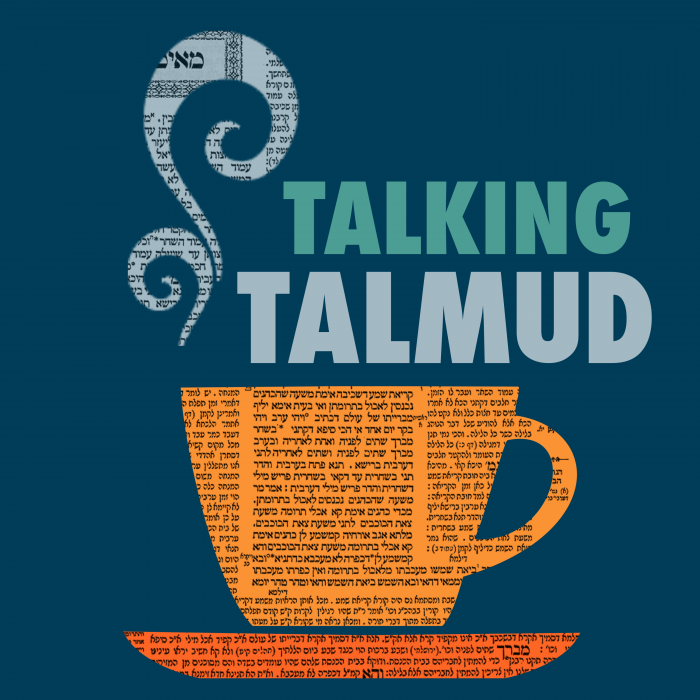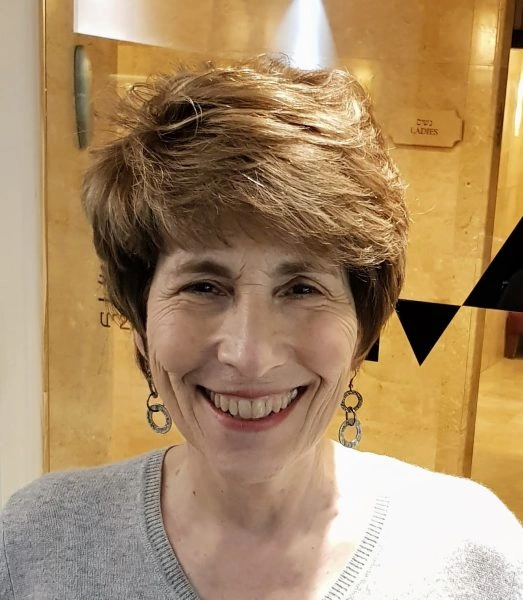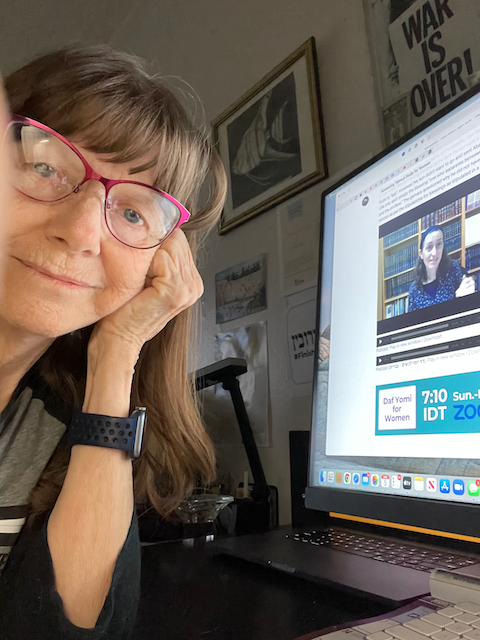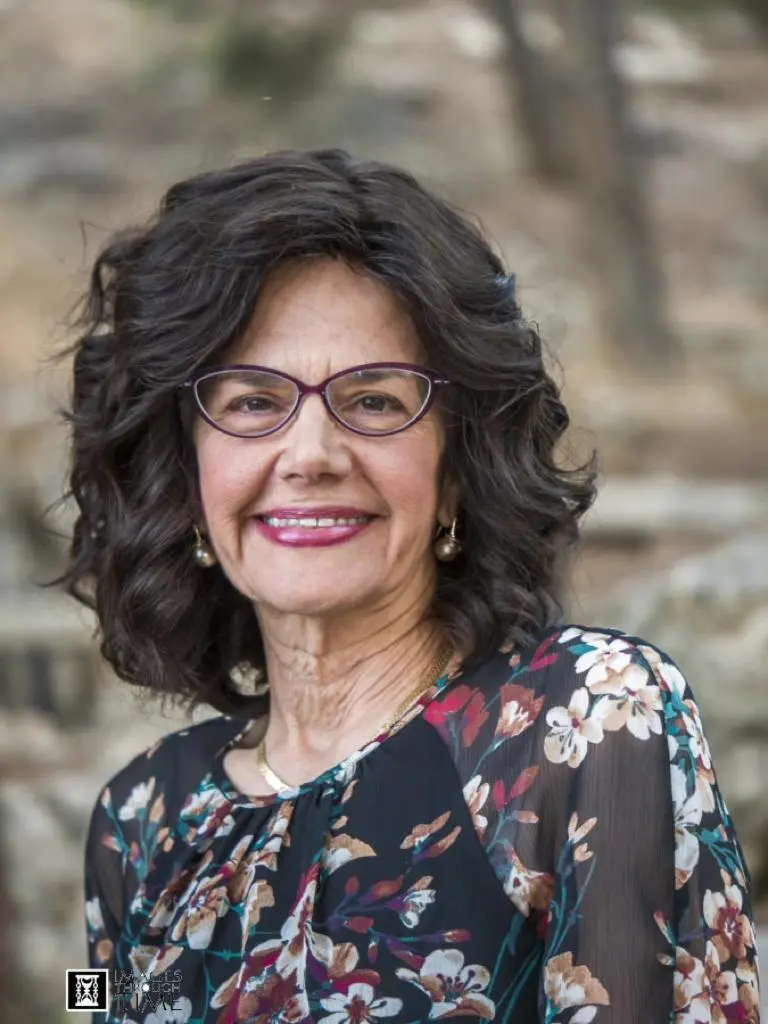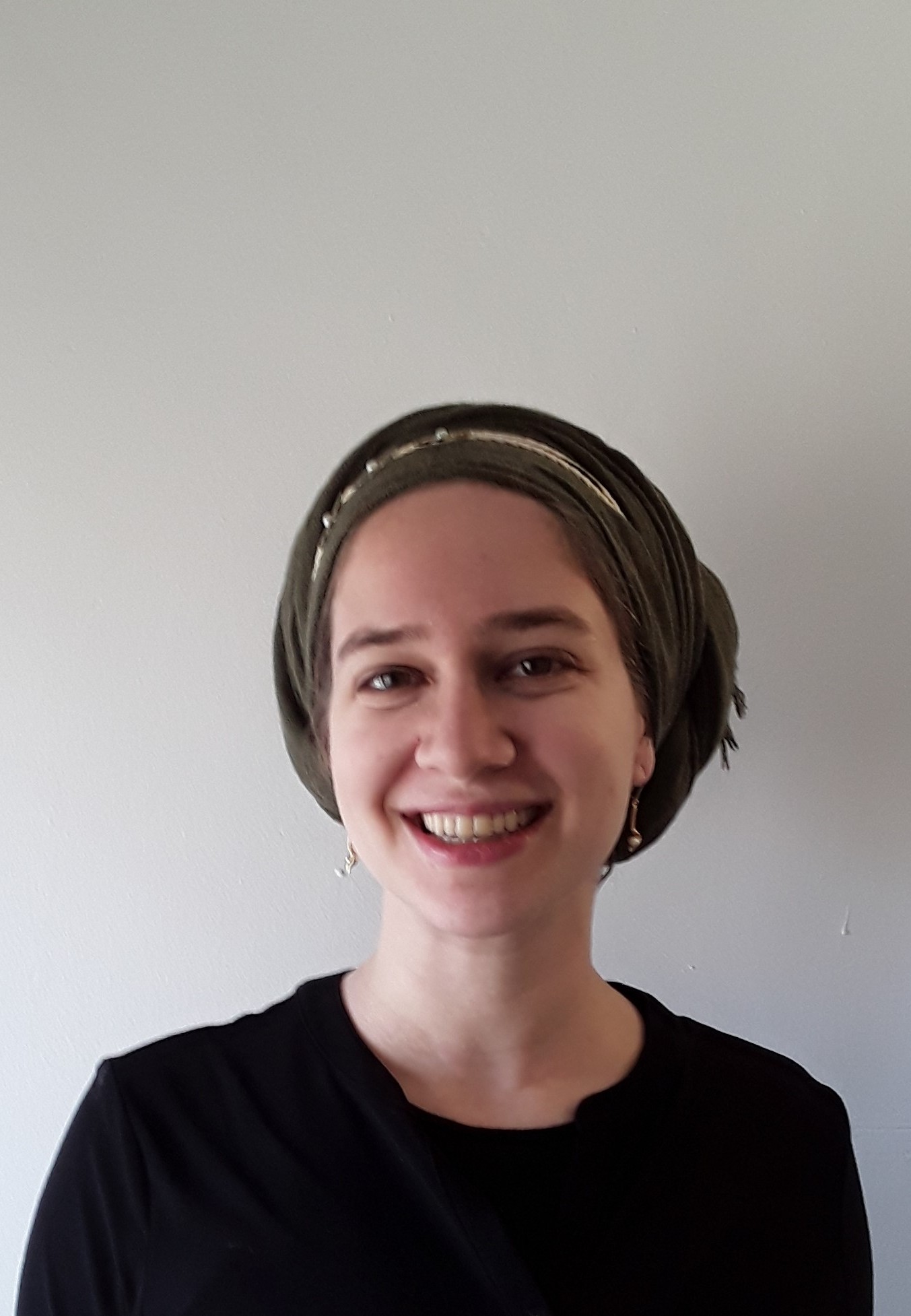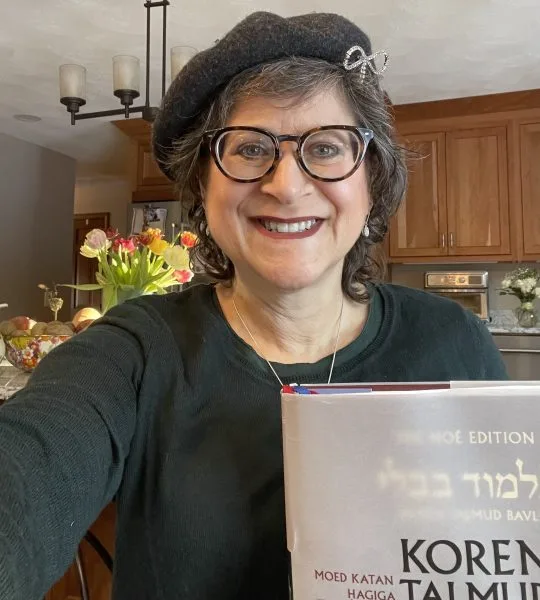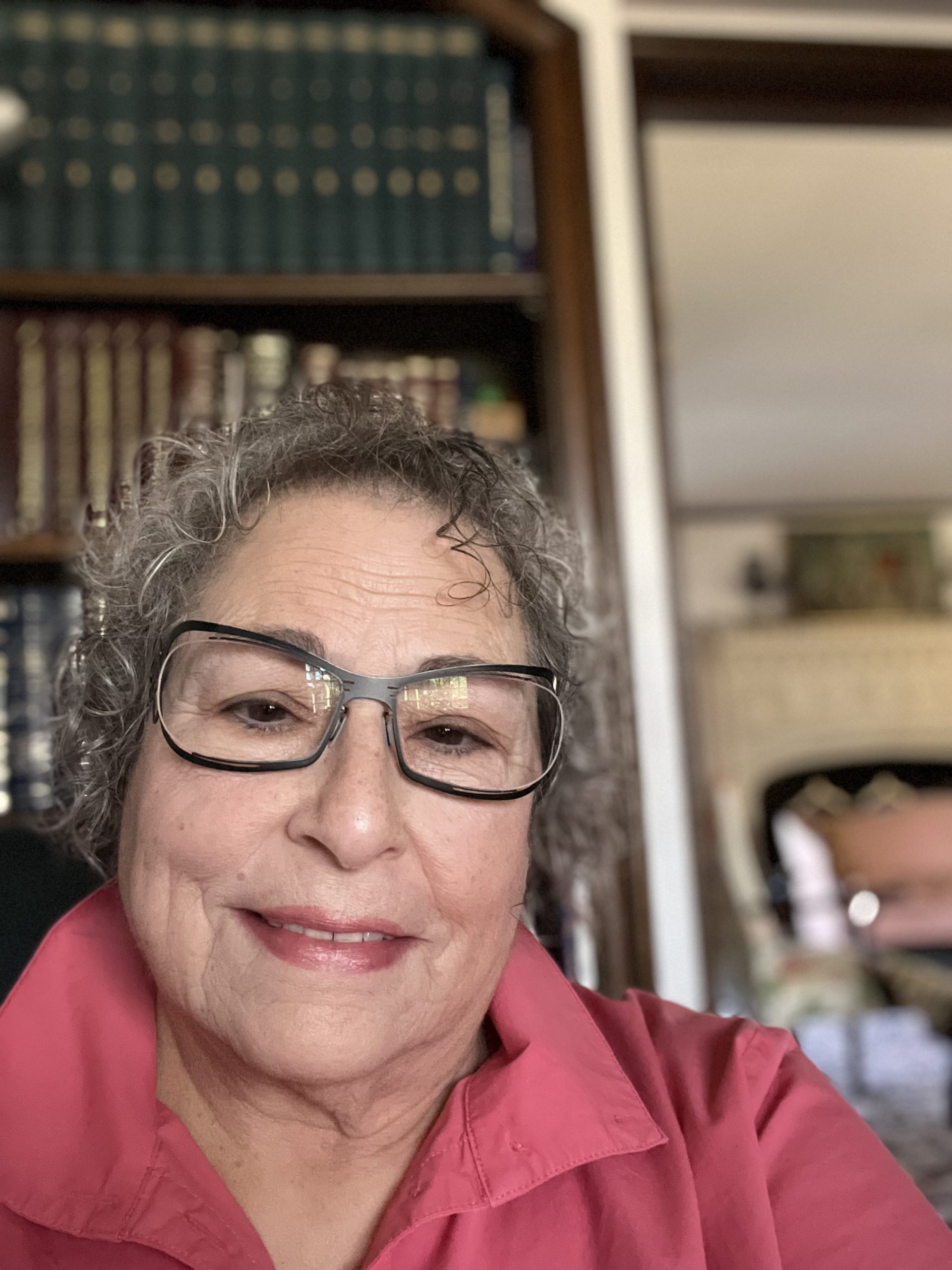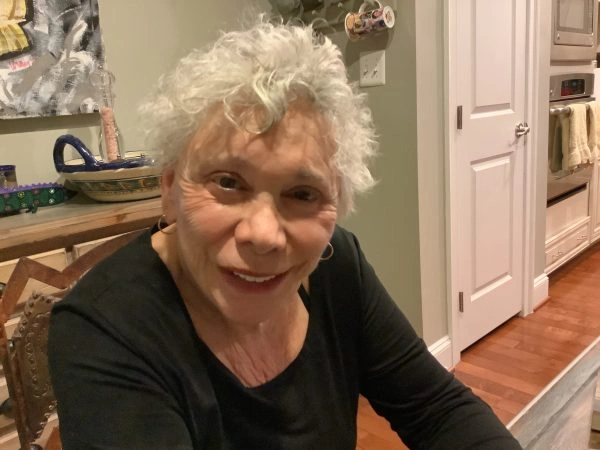There is a contradiction between two braitot regarding a stipulation about the woman not having vows – what if she annuls the vow with a chacham? In one source they rule, the marriage is valid, in the other, it is not. The Gemara resolves the contradiction in two ways. The first one is to say it is a dispute between Rabbi Meir and Rabbi Elazar as explained by a Mishna that mentioned their opinions. The second resolution is that one is talking about an important woman and the other is not. If she is an important woman, he made the stipulation to ensure that if there were an issue, there would be no marriage so as not to forbid him to her relatives. If so, why does it appear after that case that if the condition is that there were no vows on him, and he annulled them, the marriage is valid – wouldn’t we assume she would want the marriage dissolved to be free to marry his relatives? It’s because women prefer to be married than to not be married. The Gemara cites several sayings to the effect that women prefer to be married. What are disqualifying blemishes in a woman? A braita says that there are blemishes that do not disqualify kohanim but are considered blemishes for women. Which? Are they really not blemishes for kohanim? The Gemara brings a contradiction from Mishna and resolves it in two ways. There are several other defects that are especially considered to be blemishes for women. If a woman is found with blemishes after the betrothal while still in her father’s house, the burden of proof lies on her father to prove that the blemishes happened after the betrothal and the husband cannot claim it was a mekach tau’t – mistaken betrothal. But without this proof, the husband has the upper hand. If they find a blemish in the woman from the time of marriage while she is in the house of the husband, the husband must prove that it is from before the engagement. But without this proof, the father has the upper hand. There is a contradiction between the two parts of the Mishna. The Gemara provides two resolutions.
Want to dedicate learning? Get started here:


Summary
Today’s daily daf tools:
Today’s daily daf tools:
Delve Deeper
Broaden your understanding of the topics on this daf with classes and podcasts from top women Talmud scholars.
New to Talmud?
Check out our resources designed to help you navigate a page of Talmud – and study at the pace, level and style that fits you.
The Hadran Women’s Tapestry
Meet the diverse women learning Gemara at Hadran and hear their stories.
Ketubot 75
״וְלֹא הִכּוּם בְּנֵי יִשְׂרָאֵל כִּי נִשְׁבְּעוּ לָהֶם נְשִׂיאֵי הָעֵדָה״, וְכַמָּה רַבִּים? רַב נַחְמָן בַּר יִצְחָק אָמַר: שְׁלֹשָׁה. יָמִים — שְׁנַיִם, רַבִּים — שְׁלֹשָׁה. רַבִּי יִצְחָק אָמַר: עֲשָׂרָה, ״עֵדָה״ כְּתִיב בְּהוּ.
“And the children of Israel did not smite them, for the princes of the assembly had sworn to them” (Joshua 9:18), and since this oath was uttered in the presence of many people, it could not be rescinded, although it was undertaken in error because the Gibeonites had deceived the people of Israel. The Gemara poses a question: And how many people are considered many for the purposes of this law? Rav Naḥman bar Yitzḥak said: Three, as can be learned from the laws of a woman who experiences a discharge of uterine blood after her menstrual period [zava]: “Days” indicates two, which is the minimal number justifying use of the plural noun. The term “many days” (Leviticus 15:25) therefore indicates a total of three. Rabbi Yitzḥak said: Ten, as the term “assembly” is written in relation to the Gibeonites, and it is taught elsewhere that an assembly is comprised of at least ten members.
רַבִּי מֵאִיר אוֹמֵר: כׇּל נֶדֶר שֶׁצָּרִיךְ חֲקִירַת חָכָם — לֹא יַחֲזִיר. רַבִּי אֶלְעָזָר אוֹמֵר: לֹא אָסְרוּ צָרִיךְ אֶלָּא מִפְּנֵי שֶׁאֵינוֹ צָרִיךְ. בְּמַאי קָמִיפַּלְגִי? רַבִּי מֵאִיר סָבַר: אָדָם רוֹצֶה שֶׁתִּתְבַּזֶּה אִשְׁתּוֹ בְּבֵית דִּין, רַבִּי אֶלְעָזָר סָבַר: אֵין אָדָם רוֹצֶה שֶׁתִּתְבַּזֶּה אִשְׁתּוֹ בְּבֵית דִּין.
The mishna teaches: Rabbi Meir says: In the case of any vow that requires investigation by a halakhic authority, he may not remarry her. Rabbi Elazar says: They prohibited remarrying a woman who was bound by a vow that requires investigation by a halakhic authority only due to a vow that does not require such investigation. The Gemara asks: With regard to what principle do they disagree? Rabbi Meir holds that a man is willing for his wife to be degraded in court, by going to have her vow dissolved. There is concern that the husband might say that had he known the vow could be dissolved he would not have divorced his wife. Such a claim would cast doubt on the validity of the bill of divorce. Rabbi Elazar maintains that a man is not willing for his wife to be degraded in court at all. Therefore, he cannot undermine the bill of divorce. The Sages prohibited him from remarrying her only due to a case that does not need investigation, as the husband can claim he did not know the vow could be dissolved.
רָבָא אָמַר: הָכָא בְּאִשָּׁה חֲשׁוּבָה עָסְקִינַן, דְּאָמַר: לָא נִיחָא לִי דְּאִיתְּסַר בִּקְרוֹבוֹתֶיהָ.
Returning to the earlier discussion, Rava said a different explanation of the baraita that rules that if she went to a halakhic authority who dissolved her vow she is nevertheless not betrothed: Here we are dealing with an important woman, i.e., a woman from an important family. The husband does not want her due to her habit of vowing, but since she is from an important family he is reluctant to give her a bill of divorce, as he says: It is not amenable to me to be forbidden to all her relatives. He wants to retain ties of marriage with this family, and once he has married this woman, even if he divorces her, he will be forbidden to her mother or sisters. He therefore prefers that the betrothal be entirely dissolved.
אִי הָכִי, סֵיפָא דְּקָתָנֵי: אֲבָל הוּא שֶׁהָלַךְ אֵצֶל חָכָם וְהִתִּירוֹ, אֵצֶל רוֹפֵא וְרִיפֵּא אוֹתוֹ — מְקוּדֶּשֶׁת, לִיתְנֵי אֵינָהּ מְקוּדֶּשֶׁת, וְלֵימָא הָכָא בְּאָדָם חָשׁוּב עָסְקִינַן, דְּאָמְרָה: לָא נִיחָא לִי דְּאִיתְּסַר בְּקָרִיבֵיהּ!
The Gemara raises a difficulty: If so, consider the latter clause of the baraita, which teaches: But if he betroths her on condition that there are no vows incumbent upon him or that he has no blemishes, and he does have vows or blemishes, but then he goes to a halakhic authority and he dissolves his vows, or to a doctor and he heals him, she is betrothed. Yet according to Rava, in that case too let the tanna teach that she is not betrothed, and let us likewise say that here we are dealing with an important person, from an important family, as she says: It is not amenable to me to be forbidden to his relatives.
אִיהִי בְּכׇל דְּהוּ נִיחָא לַהּ, כִּדְרֵישׁ לָקִישׁ. דְּאָמַר רֵישׁ לָקִישׁ: ״טָב לְמֵיתַב טַן דּוּ מִלְּמֵיתַב אַרְמְלוּ״, אַבָּיֵי אָמַר: דְּשׁוּמְשְׁמָנָא גַּבְרָא כּוּרְסְיַהּ בֵּי חָרָאתָא רָמֵי לַהּ.
The Gemara answers: There is a difference between a man and a woman in this regard, for it is amenable to her to be with any man, flawed though he may be, as taught by Reish Lakish: As Reish Lakish said that women say: It is better to dwell together as two [tan du] than to dwell alone as if a widow. Women will prefer any marriage to remaining single. Similarly, Abaye said that women say: One whose husband is small as an ant, nevertheless places her seat among the noblewomen, as she considers herself important by virtue of the mere fact that she is married.
רַב פָּפָּא אָמַר: דְּנַפָּסָא גַּבְרָא, תִּיקְרְיֵיהּ בְּסִיפֵּי בָבָא וְתֵיתִיב. רַב אָשֵׁי אָמַר: דְּקַלָּסָא גַּבְרָא, לָא בָּעֲיָא טְלָפְחֵי לְקִידְרָא. תָּנָא: וְכוּלָּן מְזַנּוֹת וְתוֹלוֹת בְּבַעְלֵיהֶן.
Rav Pappa said a different maxim expressing a similar idea: One whose husband is a wool comber [nafsa], a lowly occupation, calls him to sit with her at the entrance to the house, as she is proud of him and happy to be married. Similarly, Rav Ashi said: Even one whose husband is lowly [kalsa] does not require lentils for her pot. She is so happy with the simple fact that she is married that she does not mind even if he does not provide her with food. The Gemara comments that it is taught: And all of these women who have lowly husbands yet appear so satisfied with their marriage commit adultery and attribute the birth of the children to their husbands. This is another reason why they are so keen to be married.
כׇּל מוּמִין שֶׁפּוֹסְלִין וְכוּ׳. תָּנָא: הוֹסִיפוּ עֲלֵיהֶן זֵיעָה, וְשׁוּמָא, וְרֵיחַ הַפֶּה. וְהָנֵי בְּכָהֲנֵי לָא פָּסְלִי? וְהָתְנַן: הַזָּקֵן, וְהַחוֹלֶה, וְהַמְזוֹהָם. וּתְנַן: מוּמִין אֵלּוּ, בֵּין קְבוּעִין בֵּין עוֹבְרִין — פְּסוּלִין בָּאָדָם.
§ The mishna teaches that all blemishes that disqualify priests disqualify women’s betrothal as well. The Sage taught in the Tosefta (Ketubot 87:9): To these, they added several additional blemishes applying only to women: Sweat, a mole, and a foul odor from the mouth. The Gemara poses a question: And do these blemishes not also disqualify priests? Didn’t we learn in a mishna with regard to blemishes of animals (Bekhorot 41a): The old, the sick, and the filthy? And it was taught in a different mishna (Bekhorot 43a): These blemishes stated concerning animals, whether they are permanent or whether they are temporary, render people, i.e., priests, disqualified as well. This shows that filth and sweat disqualify priests too.
אָמַר רַבִּי יוֹסֵי בְּרַבִּי חֲנִינָא, לָא קַשְׁיָא: כָּאן בְּזֵיעָה עוֹבֶרֶת, כָּאן בְּזֵיעָה שֶׁאֵינָהּ עוֹבֶרֶת.
Rabbi Yosei, son of Rabbi Ḥanina, said: This is not difficult. Here, where the baraita states that these blemishes do not disqualify priests, it is referring to removable sweat, which can be washed off. There, the mishna that considers it is a disqualifying blemish for priests, it is speaking of sweat that is not removable.
רַב אָשֵׁי אָמַר: זֵיעָה אַמְּזוֹהָם קָא רָמֵית? הָתָם גַּבֵּי כֹּהֲנִים — אֶפְשָׁר לְעַבֹּרַהּ בְּקִיּוּהָא דְחַמְרָא. וּמֵרֵיחַ הַפֶּה נָמֵי — אֶפְשָׁר דְּנָקֵט פִּילְפְּלָא בְּפוּמֵּיהּ וְעָבֵיד עֲבוֹדָה. אֲבָל גַּבֵּי אִשָּׁה לָא אֶפְשָׁר.
Rav Ashi said that the entire question is unsubstantiated. Have you raised a contradiction between a ruling concerning sweat and a ruling concerning filth? The term filthy indicates that there is a permanently foul odor, which disqualifies both animals and priests. But there, with regard to priests who suffer from foul odors due to sweat, it is possible to remove it in the short term by use of wine vinegar. And the priest can also temporarily cure himself from a foul odor of the mouth, as it is possible to hold pepper in his mouth to alleviate the odor and proceed to perform the service. But with regard to a woman it is not possible for her to utilize these remedies on a constant basis. Consequently, this blemish disqualifies women and not priests.
הַאי שׁוּמָא הֵיכִי דָּמְיָא? אִי דְּאִית בַּהּ שֵׂעָר — הָכָא וְהָכָא פָּסְלָה. אִי דְּלָא אִית בַּהּ שֵׂעָר, אִי שׁוּמָא גְּדוֹלָה הִיא — הָכָא וְהָכָא פָּסְלָה, אִי שׁוּמָא קְטַנָּה הִיא — הָכָא וְהָכָא לָא פָּסְלָה, דְּתַנְיָא: שׁוּמָא שֶׁיֵּשׁ בָּהּ שֵׂעָר — הֲרֵי זֶה מוּם. אֵין בָּהּ שֵׂעָר, גְּדוֹלָה הֲרֵי זֶה מוּם, קְטַנָּה אֵין זֶה מוּם. וְאֵיזוֹהִי גְּדוֹלָה? פֵּירֵשׁ רַבָּן שִׁמְעוֹן בֶּן גַּמְלִיאֵל: עַד כְּאִיסָּר הָאִיטַלְקִי.
The baraita stated that a mole is a blemish for a woman but not for a priest. The Gemara poses a question: What are the circumstances with regard to this mole? If it has hair growing in it, both here and there, with regard to both women and priests, it is disqualifying. If it does not have hair in it, the following distinction applies: If it is a large mole, both here and there it is disqualifying. If it is a small mole, both here and there it is not disqualifying, as it is taught in a baraita: A mole that has hair in it, this is a blemish. With regard to one that does not have a hair in it, if it is large, this is a blemish. If it is small, this is not a blemish. The tanna proceeds to ask: And what is considered large? Rabban Shimon ben Gamliel explained: As large as the size of an Italian issar, a small coin.
אָמַר רַבִּי יוֹסֵי בְּרַבִּי חֲנִינָא: בְּעוֹמֶדֶת עַל פַּדַּחְתָּהּ. פַּדַּחְתָּהּ — רָאָה וְנִיפַּיַּיס הוּא! אָמַר רַב פָּפָּא: בְּעוֹמֶדֶת לָהּ תַּחַת כִּפָּה שֶׁל רֹאשָׁהּ, וְזִימְנִין דְּמִתְחַזְיָא וְזִימְנִין דְּלָא מִתְחַזְיָא.
The Gemara answers: Rabbi Yosei, son of Rabbi Ḥanina, said: The case in the baraita discusses a mole that is positioned on her forehead. Despite the mole’s small size, its prominent location makes her appear very ugly. The Gemara asks: If it is on her forehead, it is something that he has seen and accepted. Since it is visible, he knew about it before agreeing to marry her. Therefore, he cannot later divorce her due to a blemish of this kind. Rav Pappa said: The baraita is referring to a mole that is positioned under the cap that is on top of her head. Sometimes it is visible and sometimes it is not visible, and he may not have seen it in advance. It is necessary to teach us that a mole of this kind is considered a blemish.
אָמַר רַב חִסְדָּא: הָא מִילְּתָא מִגַּבְרָא רַבָּה שְׁמִיעַ לִי, וּמַנּוּ — רַבִּי שֵׁילָא: נְשָׁכָהּ כֶּלֶב וְנַעֲשָׂה מְקוֹמוֹ צַלֶּקֶת — הֲרֵי זֶה מוּם. אָמַר רַב חִסְדָּא: קוֹל עָבֶה בָּאִשָּׁה — הֲרֵי זֶה מוּם, שֶׁנֶּאֱמַר: ״כִּי קוֹלֵךְ עָרֵב וּמַרְאֵךְ נָאוֶה״. תָּנֵי רַבִּי נָתָן בִּירָאָה: בֵּין דַּדֵּי אִשָּׁה טֶפַח. סָבַר רַב אַחָא בְּרֵיהּ דְּרָבָא קַמֵּיהּ דְּרַב אָשֵׁי לְמֵימַר טֶפַח לִמְעַלְּיוּתָא. אֲמַר לֵיהּ רַב אָשֵׁי: גַּבֵּי מוּמִין תַּנְיָא, וְכַמָּה? אָמַר אַבָּיֵי: שָׁלֹשׁ אֶצְבָּעוֹת.
Rav Ḥisda said: I heard this matter from a great man, and who was this great man? Rabbi Sheila was the great man. He said: If a dog bit a woman, and the place of the wound developed into a scar, this is a blemish. Rav Ḥisda further said: A deep voice in a woman, this is a blemish, as it is stated: “For your voice is sweet and your appearance pleasant” (Song of Songs 2:14). Rabbi Natan Bira’a taught: A handbreadth between a woman’s breasts. The amora’im have a dispute concerning the meaning of Rabbi Natan Bira’a’s statement: Rav Aḥa, son of Rava, thought to say before Rav Ashi that this means a handbreadth between a woman’s breasts is perfection and considered beautiful. Rav Ashi said to him: This baraita is taught with regard to blemishes, and it means that if her breasts are separated by a gap this wide, it is a blemish. The Gemara asks: And how much of a gap is considered normal? Abaye said: The width of three fingers.
תַּנְיָא, רַבִּי נָתָן אוֹמֵר: כׇּל אִשָּׁה שֶׁדַּדֶּיהָ גַּסִּין מִשֶּׁל חַבְרוֹתֶיהָ — הֲרֵי זֶה מוּם. וְכַמָּה? אָמַר רַבִּי מְיָישָׁא בַּר בְּרֵיהּ דְּרַבִּי יְהוֹשֻׁעַ בֶּן לֵוִי מִשְּׁמֵיהּ דְּרַבִּי יְהוֹשֻׁעַ בֶּן לֵוִי: טֶפַח. וּמִי אִיכָּא כִּי הַאי גַוְונָא? אִין, דְּאָמַר רַבָּה בַּר בַּר חָנָה: אֲנִי רָאִיתִי עַרְבִיָּא אַחַת שֶׁהִפְשִׁילָה דַּדֶּיהָ לַאֲחוֹרֶיהָ וְהֵנִיקָה אֶת בְּנָהּ.
It is taught in a baraita: Rabbi Natan says: Any woman whose breasts are larger than those of other women, this is a blemish. The Gemara poses a question: And how much larger must they be to be considered a blemish? Rabbi Meyasha, son of the son of Rabbi Yehoshua ben Levi, said in the name of Rabbi Yehoshua ben Levi: If they are a handbreadth larger than the norm. The Gemara inquires: And is there a case like this? Is it possible for a woman to have such large breasts? The Gemara answers: Yes, as Rabba bar bar Ḥanna said: I once saw a certain Arab woman who flung her breasts behind her and nursed her child.
״וּלְצִיּוֹן יֵאָמַר אִישׁ וְאִישׁ יוּלַּד בָּהּ וְהוּא יְכוֹנְנֶהָ עֶלְיוֹן״. אָמַר רַבִּי מְיָישָׁא בַּר בְּרֵיהּ דְּרַבִּי יְהוֹשֻׁעַ בֶּן לֵוִי: אֶחָד הַנּוֹלָד בָּהּ, וְאֶחָד הַמְצַפֶּה לִרְאוֹתָהּ. אָמַר אַבָּיֵי: וְחַד מִינַּיְיהוּ עֲדִיף כִּתְרֵי מִינַּן. אָמַר רָבָא: וְחַד מִינַּן כִּי סָלֵיק לְהָתָם — עֲדִיף כִּתְרֵי מִינַּיְיהוּ. דְּהָא רַבִּי יִרְמְיָה דְּכִי הֲוָה הָכָא לָא הֲוָה יָדַע מַאי קָאָמְרִי רַבָּנַן, כִּי סְלֵיק לְהָתָם, קָרֵי לַן ״בַּבְלָאֵי טַפְשָׁאֵי״.
§ Since the Gemara quoted a statement of Rabbi Yehoshua ben Levi’s grandson, the Gemara cites another exposition in his name. The verse states: “And of Zion it shall be said, this man and this man were born in her, and the Most High shall establish her” (Psalms 87:5). Rabbi Meyasha, son of the son of Rabbi Yehoshua ben Levi, said: Both the man who was actually born in Zion and the one who looks forward to seeing her are equally considered sons of Zion. Abaye said: And one of the inhabitants of Eretz Yisrael is superior to two of us, Babylonians. Rava said: And one of us Babylonians, when he ascends to Eretz Yisrael, is superior to two people born and raised in Eretz Yisrael. The Gemara cites a proof for Rava’s claim: As Rabbi Yirmeya, when he was here, in Babylonia, did not even know what the Sages say. He was not considered an important scholar. But when he ascended there, it was he, and not the other Sages of Eretz Yisrael, who called us foolish Babylonians. Evidently, he became even greater than they were.
מַתְנִי׳ הָיוּ בָּהּ מוּמִין וְעוֹדָהּ בְּבֵית אָבִיהָ — הָאָב צָרִיךְ לְהָבִיא רְאָיָה שֶׁמִּשֶּׁנִּתְאָרְסָה הָיוּ בָּהּ מוּמִין הַלָּלוּ וְנִסְתַּחֲפָה שָׂדֵהוּ. נִכְנְסָה לִרְשׁוּת הַבַּעַל — הַבַּעַל צָרִיךְ לְהָבִיא רְאָיָה שֶׁעַד שֶׁלֹּא נִתְאָרְסָה הָיוּ בָּהּ מוּמִין אֵלּוּ, וְהָיָה מִקָּחוֹ מִקָּח טָעוּת. דִּבְרֵי רַבִּי מֵאִיר. וַחֲכָמִים אוֹמְרִים: בַּמֶּה דְּבָרִים אֲמוּרִים — בְּמוּמִין שֶׁבַּסֵּתֶר,
MISHNA: If she has blemishes and she is still in her father’s house, as she has not yet gotten married, the father must bring proof that these blemishes appeared on her after she became betrothed, and therefore his field was flooded, i.e., it is the husband’s misfortune, since she developed the problem after the betrothal. But if she has already gotten married and entered the husband’s domain when her blemishes are discovered, the husband must bring proof that she had these blemishes before she was betrothed, and consequently the transaction of betrothal was a mistaken transaction. This is the statement of Rabbi Meir. But the Rabbis say: In what case is this statement, that a husband can claim to have found blemishes in his wife, on account of which he wants to void the betrothal, said? With regard to hidden blemishes.
אֲבָל בְּמוּמִין שֶׁבַּגָּלוּי אֵינוֹ יָכוֹל לִטְעוֹן. וְאִם יֵשׁ מֶרְחָץ בְּאוֹתָהּ הָעִיר — אַף מוּמִין שֶׁבַּסֵּתֶר אֵינוֹ יָכוֹל לִטְעוֹן, מִפְּנֵי שֶׁהוּא בּוֹדְקָהּ בִּקְרוֹבוֹתָיו.
But with regard to visible blemishes, he cannot claim that the betrothal was in error, as he presumably saw and accepted them before the betrothal. And if there is a bathhouse in the city, where all the women go to bathe, even with regard to hidden blemishes he cannot make this claim, because he examines her through the agency of his female relatives. He would have asked one of his relatives to look over the woman he is about to marry.
גְּמָ׳ טַעְמָא דְּמַיְיתֵי הָאָב רְאָיָה, הָא לָא מַיְיתֵי הָאָב רְאָיָה — (הַ)בַּעַל מְהֵימַן. מַנִּי? רַבִּי יְהוֹשֻׁעַ הִיא, דְּאָמַר: לָא מִפִּיהָ אָנוּ חַיִּין.
GEMARA: The mishna states that if the woman had blemishes while she was in her father’s house, the father must bring proof that they developed after the betrothal. The Gemara infers: The reason the father’s claim is accepted is due to the fact that the father brings proof, but if the father does not bring proof then the husband is deemed credible when he claims the betrothal was a mistaken transaction because the blemishes predated it. The Gemara asks: In accordance with whose opinion is this mishna? It is the opinion of Rabbi Yehoshua, who said in a mishna (12a) with regard to a case when the wife claims that she was raped after her betrothal while her husband says it happened beforehand, that we don’t live from, i.e., we don’t rely on the words of her mouth, but rather she must substantiate her claim.
אֵימָא סֵיפָא: נִכְנְסָה לִרְשׁוּת הַבַּעַל — הַבַּעַל צָרִיךְ לְהָבִיא רְאָיָה. טַעְמָא דְּמַיְיתֵי הַבַּעַל רְאָיָה, הָא לָא מַיְיתֵי הַבַּעַל רְאָיָה — (הָ)אָב מְהֵימַן. אֲתָאן לְרַבָּן גַּמְלִיאֵל דְּאָמַר נֶאֱמֶנֶת! אָמַר רַבִּי אֶלְעָזָר: תַּבְרַהּ, מִי שֶׁשָּׁנָה זוֹ לֹא שָׁנָה זוֹ.
The Gemara continues: Now say the latter clause of the mishna: If she had entered the husband’s domain, the husband must bring proof. Again the Gemara infers: The reason his claim is accepted is due to the fact that the husband brings proof, but if the husband does not bring proof then the father is deemed credible. We arrive at the opinion of Rabban Gamliel, who said that the woman is deemed credible when she says that the incident occurred after the betrothal. Consequently, the first and last clauses of the mishna appear to contradict one another. Rabbi Elazar said: This mishna is disjointed, and does not follow a single opinion; the tanna who taught this halakha did not teach that halakha.
אָמַר רָבָא: לָא תֵּימָא רַבִּי יְהוֹשֻׁעַ לָא אָזֵיל בָּתַר חֲזָקָה דְגוּפָא כְּלָל, אֶלָּא: כִּי לָא אָזֵיל רַבִּי יְהוֹשֻׁעַ בָּתַר חֲזָקָה דְגוּפָא, הֵיכָא דְּאִיכָּא חֲזָקָה דְמָמוֹנָא.
Rava said: Do not say that Rabbi Yehoshua does not follow the presumptive status of the body at all, that is, it should not be assumed that Rabbi Yehoshua fundamentally rejects the idea that one’s body is presumed to remain in its initial, intact state until proven otherwise. Rather, say that Rabbi Yehoshua does not follow the presumptive status of the body only when there is an opposing claim of monetary possession. An example of this is the case in the mishna where the woman seeks to extract money from her husband for payment of her marriage contract by claiming that she was raped after the betrothal. Since acceptance of her claim would mean her husband has to pay, Rabbi Yehoshua maintains that the presumptive status of her body alone is not sufficient.
אֲבָל הֵיכָא דְּלֵיכָּא חֲזָקָה דְמָמוֹנָא — אָזֵיל רַבִּי יְהוֹשֻׁעַ בָּתַר חֲזָקָה דְגוּפָא. דְּתַנְיָא: אִם בַּהֶרֶת קוֹדֵם לְשֵׂעָר לָבָן — טָמֵא, אִם שֵׂעָר לָבָן קוֹדֵם לַבַּהֶרֶת — טָהוֹר, סָפֵק — טָמֵא. וְרַבִּי יְהוֹשֻׁעַ אוֹמֵר: כֵּהָה. מַאי ״כֵּהָה״? אָמַר רַבָּה: ״כֵּהָה״ — טָהוֹר.
But when there is no possession of money, as in the mishna, Rabbi Yehoshua does in fact follow the presumptive status of the body. As it is taught in a baraita with regard to the halakhot of leprosy: If the bright white leprous spot preceded the white hair then the one afflicted is ritually impure; if the white hair preceded the bright white spot he is pure. If it is uncertain which came first, he is impure. And Rabbi Yehoshua says: Dull. They asked: What is the meaning of dull? Rabba said that dull means it is ritually pure, as though the plague was of a dull shade, which is not impure. This shows that in an uncertain case where there is no issue of monetary possession, Rabbi Yehoshua accepts the presumptive status of the body, and therefore, the one afflicted is ritually pure.
רָבָא אָמַר: רֵישָׁא, כָּאן נִמְצְאוּ וְכָאן הָיוּ. סֵיפָא נָמֵי, כָּאן נִמְצְאוּ וְכָאן הָיוּ.
Rava said a different answer to the contradiction in the mishna: In the first clause of the mishna, where the blemishes were discovered while she was still in her father’s house, the assumption is that since they were discovered here, they were also created here. In other words, since the blemishes were found while she was still in her father’s house, there is a presumption that they were also present at the earlier stage, prior to the betrothal. Consequently, the burden of proof is on the father who claims the blemishes developed at a later stage. In the latter clause of the mishna as well, since the blemishes were discovered when she was in the husband’s house, it is assumed that since they were discovered here, in the husband’s domain, they were also created here, after the marriage.
אֵיתִיבֵיהּ אַבָּיֵי: נִכְנְסָה לִרְשׁוּת הַבַּעַל — הַבַּעַל צָרִיךְ לְהָבִיא רְאָיָה שֶׁעַד שֶׁלֹּא תִּתְאָרֵס הָיוּ בָּהּ מוּמִין אֵלּוּ, וְהָיָה מִקָּחוֹ מִקָּח טָעוּת. עַד שֶׁלֹּא תִּתְאָרֵס — אִין, מִשֶּׁתִּתְאָרֵס — לָא, וְאַמַּאי? לֵימָא: כָּאן נִמְצְאוּ וְכָאן הָיוּ!
Abaye raised an objection to Rava’s opinion from the mishna: If she had entered the husband’s domain when the blemishes were discovered, the husband must bring proof that she had these blemishes before she was betrothed, and therefore his transaction of betrothal was a mistaken transaction. The Gemara infers: If he brought proof that these blemishes were there before she was betrothed then yes, his claim is accepted, but if he proved that the blemishes were present from a point in time after she was betrothed, even if she was still in her father’s house, his claim is not accepted. But why? Even if his proof concerns the period after the betrothal, let us say that since they were discovered here, they were also created here, and she presumably had these blemishes before the betrothal.
אֲמַר לֵיהּ: מִשֶּׁנִּתְאָרְסָה. מִשּׁוּם דְּאִיכָּא לְמֵימַר: חֲזָקָה אֵין אָדָם שׁוֹתֶה בְּכוֹס אֶלָּא אִם כֵּן בּוֹדְקוֹ. וְהַאי רָאָה וְנִיפַּיַּיס הוּא.
Rava said to him: With regard to a case where the blemishes were found to have been present from a point in time after she was betrothed, there is a reason why one does not assume that they were there beforehand: Because it can be said that there is a presumption that a person does not drink from a cup unless he first examines it. In other words, one does not betroth a woman unless he first investigates her to determine if she is acceptable to him. And consequently this man has undoubtedly seen her blemishes and been appeased about them. Therefore, in the event that the blemishes did exist at the time of betrothal, it can be assumed that the husband knew about them and accepted the situation.
אִי הָכִי, עַד שֶׁלֹּא תִּתְאָרֵס נָמֵי! אֶלָּא אָמְרִינַן: חֲזָקָה אֵין אָדָם מִיפַּיֵּיס בְּמוּמִין. הָכָא נָמֵי, חֲזָקָה אֵין אָדָם מִיפַּיֵּיס בְּמוּמִין!
The Gemara raises a difficulty: If that is so, then even if he brought proof that the blemishes existed before she was betrothed, we should also rely on the above presumption and say that he must have been aware of them and betrothed her regardless. But this is not the halakha. Rather, it must be that we say there is an opposing presumption that a person does not become appeased with regard to blemishes. Therefore, it must be proven that he saw these blemishes and did not object. Here too, we should say there is a presumption that a person does not become appeased with regard to blemishes.
אֶלָּא: מִשֶּׁנִּתְאָרְסָה, מִשּׁוּם דְּאִיכָּא תַּרְתֵּי: חֲזָקָה הַעֲמֵד הַגּוּף עַל חֶזְקָתוֹ, וַחֲזָקָה אֵין אָדָם שׁוֹתֶה בְּכוֹס אֶלָּא אִם כֵּן בּוֹדְקוֹ, וְהַאי רָאָה וְנִיפַּיַּיס הוּא. מַאי אָמְרַתְּ? חֲזָקָה אֵין אָדָם מִיפַּיֵּיס בְּמוּמִין — הָוֵי
Rather, the mishna must be explained differently: If he brought proof that she had these blemishes from a point in time after she was betrothed, his claim of a mistaken betrothal is not accepted because there are two presumptions opposing it. There is a presumption of: Establish the state of the woman’s body according to its presumptive, unblemished status and consequently assume that the blemishes were not present at the time of betrothal, and additionally there is the presumption that a person does not drink from a cup unless he first examines it, and this man has undoubtedly seen her blemishes and been appeased. What do you say in opposition to this argument, that there is a presumption that a man does not become appeased with regard to blemishes? Even so, it is


